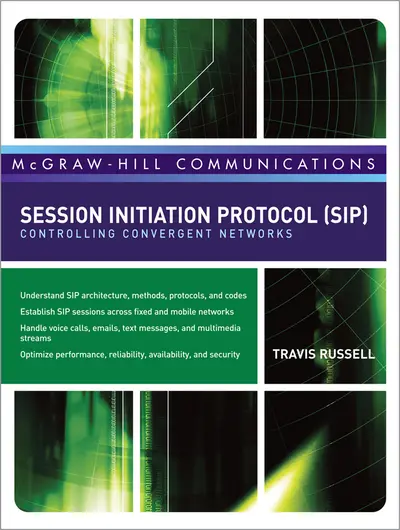My Account Details

ISBN10: 0071488529 | ISBN13: 9780071488525

Step 1 . Download Adobe Digital Editions to your PC or Mac desktop/laptop.
Step 2. Register and authorize your Adobe ID (optional). To access your eBook on multiple devices, first create an Adobe ID at account.adobe.com. Then, open Adobe Digital Editions, go to the Help menu, and select "Authorize Computer" to link your Adobe ID.
Step 3. Open Your eBook. Use Adobe Digital Editions to open the file. If the eBook doesn’t open, contact customer service for assistance.
Publisher's Note: Products purchased from Third Party sellers are not guaranteed by the publisher for quality, authenticity, or access to any online entitlements included with the product. Build a next-generation telecommunications infrastructure Consolidate divergent networks into one seamless, high-performance communications landscape using cutting-edge SIP technology, tools, and techniques. Session Initiation Protocol (SIP): Controlling Convergent Networks explains how to deliver Internet phone calls, IMs, video streams, and teleconferences across legacy, wireless, and wireline networks. Learn how to manage SIP sessions, build layers and proxies, interpret control codes, set up gateways, and comply with IETF and 3GPP standards. You'll also get details on using the latest methods, maximizing QoS, and implementing security measures. Initiate, modify, and terminate IETF-compliant SIP sessions Construct SIP messages, requests, proxies, functions, and layers Interconnect WiFi, WiMax, VoIP, and wireline networks Incorporate TDM and SS7 systems using media and signaling gateways Determine user locations with REGISTER and presence techniques Augment functionality using RFCs and packet cable extensions Prevent hijacking, tampering, DoS, DDoS, and BOTS attacks Implement reliable authentication, encryption, and intrusion detection policies
Chapter 2 - Structure of the SIP Protocol
Chapter 3 - SIP Status Codes
Chapter 4 – SIP Registration Procedures in a SIP Network
Chapter 5 – Establishing a Session in SIP
Chapter 6 – Extending SIP to Support New Functions
Chapter 7 – Security in a SIP Network
Appendix A - SIP-Related RFCs
Appendix B - Methods and Parameters
Appendix C - Methods and Parameters from a Proxy Perspective
Bibliography
Index
Need support? We're here to help - Get real-world support and resources every step of the way.